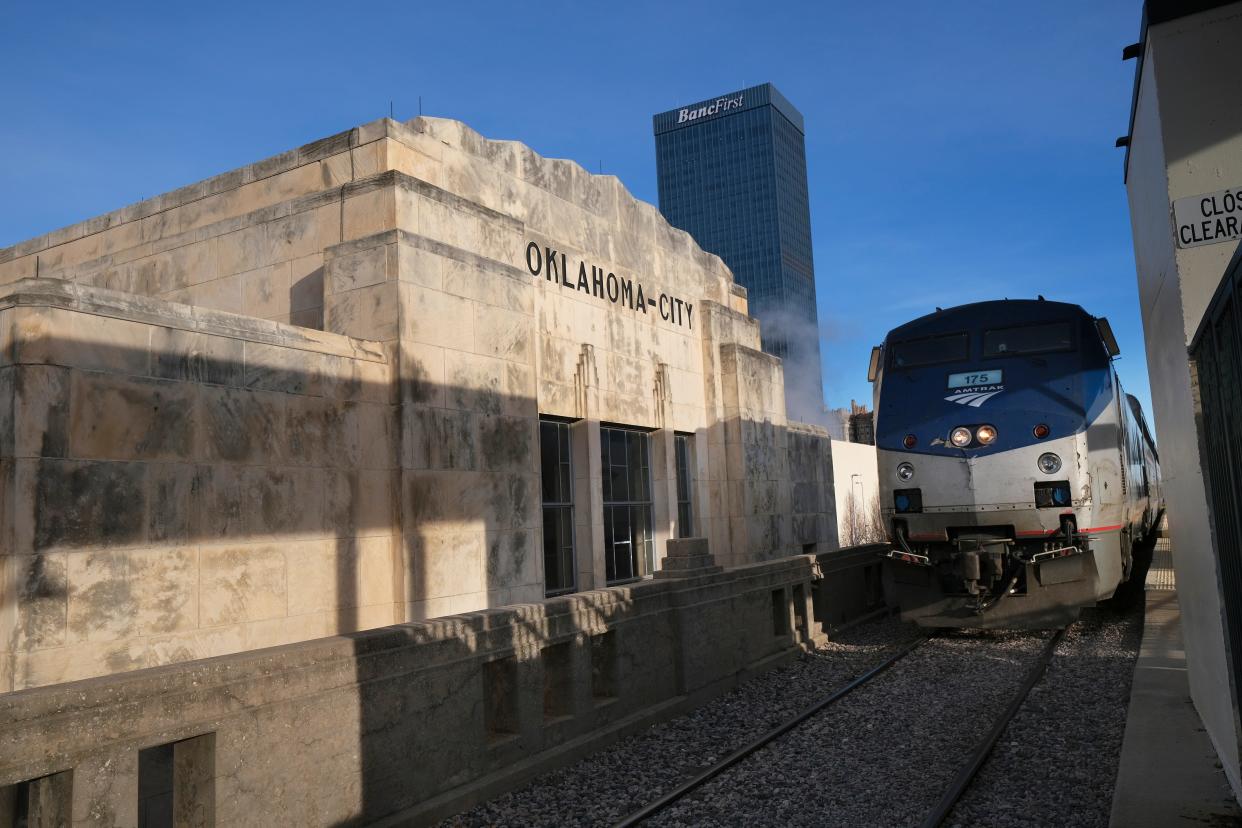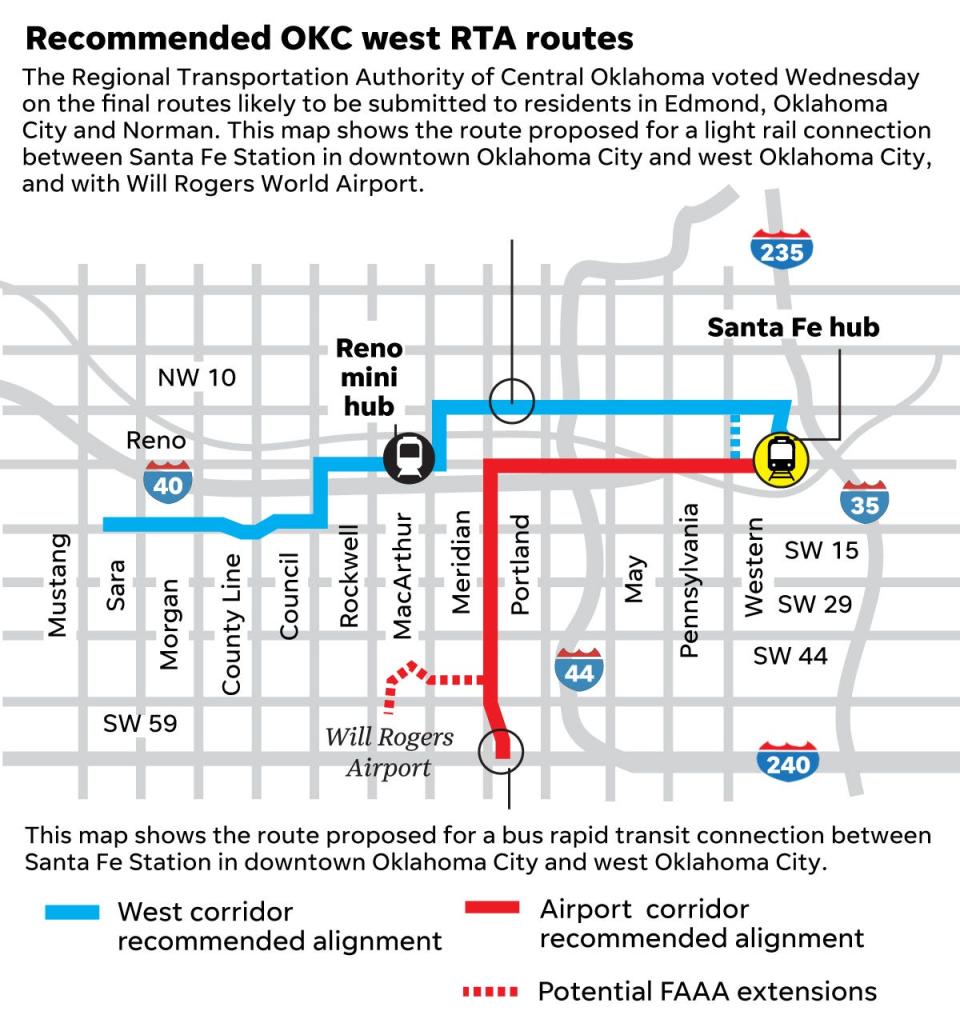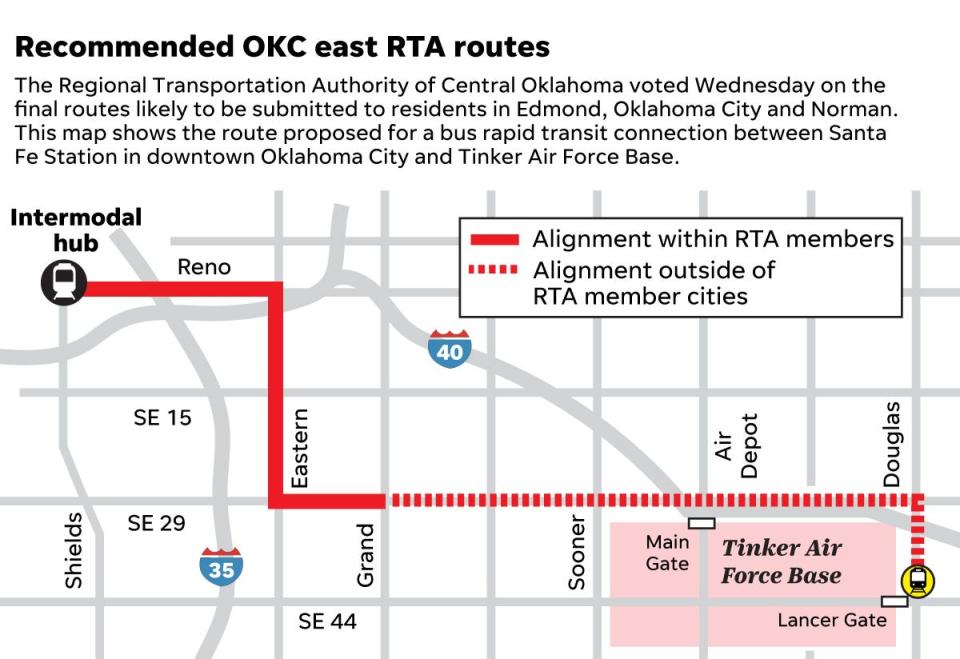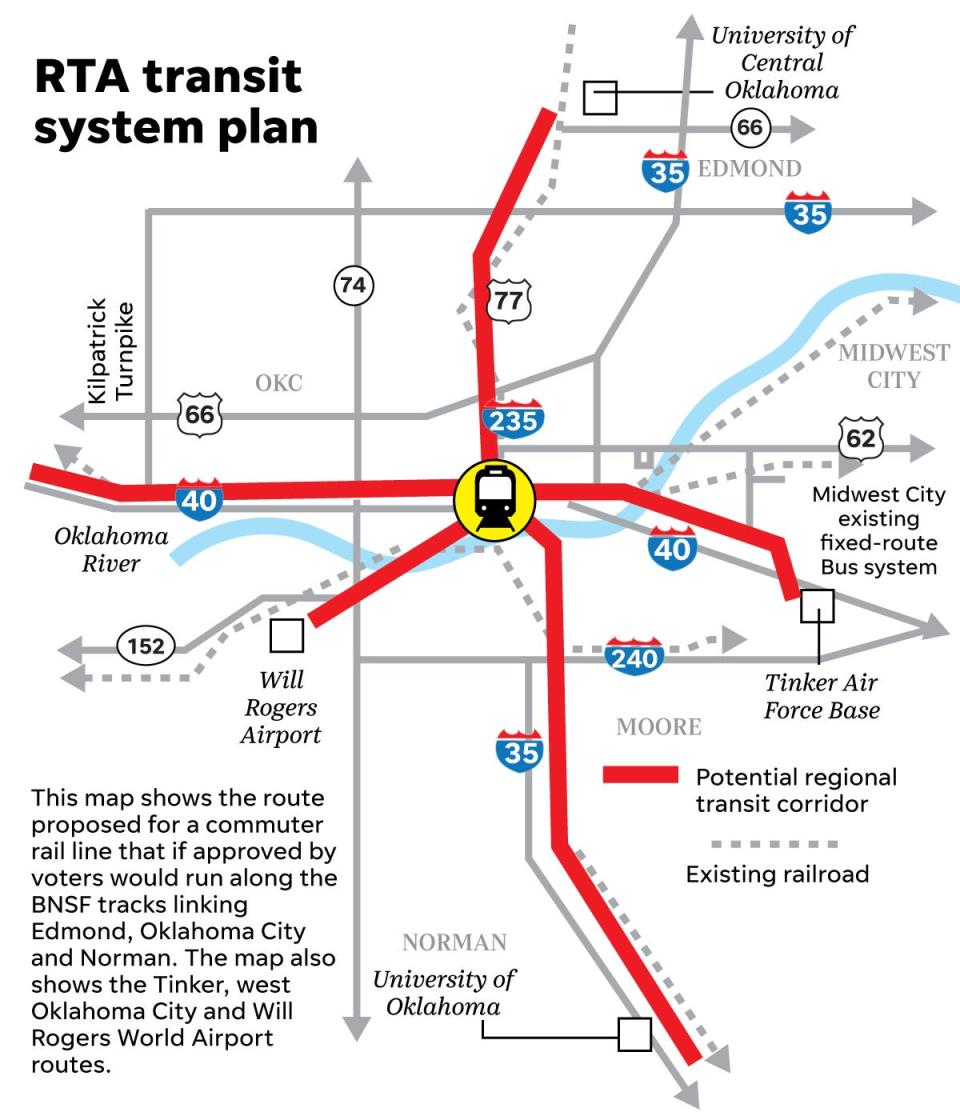Light rail between OKC and Will Rogers Airport may be on the ballot. See the route map

A light rail connection between downtown Oklahoma City and Will Rogers World Airport is set to be included on a regional transit ballot likely to go to voters in early 2025.
The Regional Transportation Authority of Central Oklahoma on Wednesday unanimously approved the west Oklahoma City and airport connections, which will be a part of a network that will also include service to Tinker Air Force Base and a commuter rail linking Edmond, Oklahoma City and Norman.
Liz Scanlon, a consultant with Kimley-Horn, suggested the light rail connection for the airport based on extensive studies and discussions with stakeholders and potential riders.
“We're not just talking about commuter traffic,” Scanlon said. “We're looking at helping visitors, people who work at the airport, people traveling to the airport. There is a major opportunity to connect with the world through Will Rogers.”

At the same time, planners have held discussions with officials at the FAA who are eager to see the route also connect to the Mike Monroney Aeronautical Center, the city’s second-largest employer.
Bus vs. light rail: The pros, cons, and the cost
Bus rapid transit is recommended for the route traveling to Oklahoma City along NW 10 and Reno Avenue with likely termination at a future park-and-ride at SW 15 and the Kilpatrick Turnpike. Bus rapid transit also was previously chosen for the east route to Tinker Air Force Base.
The cost difference between the bus rapid transit and light rail options is significant. Mixed traffic bus rapid transit, which consists of more shared lane miles than fixed guideway lanes, costs $8 million a mile. A bus rapid transit route with at least 50% using dedicated lanes is estimated to cost $51 million a mile.
Light rail in fully dedicated tracks with cantilever overhead lines, is estimated at $125 million per mile.
“We heard very loudly and clearly the enthusiasm about the economic development potential of light rail transit on the airport corridor," Scanlon said. Stakeholders see the northwest rapid (started earlier this year) as a success and see similar potential for the west route.”
More: Could national Amtrak route include stop in Oklahoma City?

The regional transit authority on Wednesday also chose to use double-decker train cars for the commuter rail that will serve Edmond, Oklahoma City and Norman along the BNSF railway. The train cars were chosen over single level cars due to BNSF car length restrictions, capacity and the number of crews needed to operate the service.
The light rail connection to the airport would follow a relatively simple path along Reno Avenue from downtown and then along Meridian Avenue to the airport. The exact termination spot at the airport will be determined later but will be targeted to go as close as possible to the terminal.
The map, very likely the one that will go to voters next year, extends 35 miles north and south between Edmond and Norman, 14.6 miles in west Oklahoma City, 11 miles to Tinker Air Force Base and 9.8 miles to Will Rogers World Airport.
Regional transit commission Chairman Brad Henry said the routes proposed to be established with bus rapid transit are being designed to allow upgrades to light rail should the demand be shown with future ridership and development potential.
“We’re trying to be good stewards of taxpayers’ dollars, as well,” Henry said.

Voters will ultimately decide whether to fund project
The next steps include the city councils of Edmond, Norman and Oklahoma City agreeing to set an election date. The likely sales tax ballot will require a majority vote among the totality of residents in the three cities.
Barbara Peck, who represents west Oklahoma City’s third ward, told the regional transit commissioners she shares their excitement for the potential of not just improved public transportation but potential economic development.
“We’re the fastest-growing part of the city,” Peck said. “I think at almost every council meeting, much to the dismay of some, we approve zoning for 200 to 300 rooftops. And we have people who need to get around the city other than by car. That is a change from the past in the area where I live. We’re very excited about this.”
This article originally appeared on Oklahoman: Light rail between OKC, Will Rogers may head to voters in 2025

